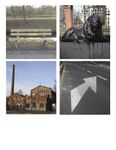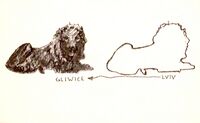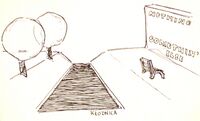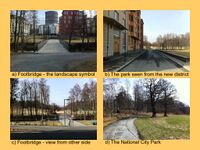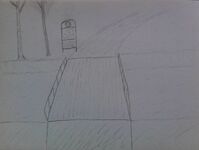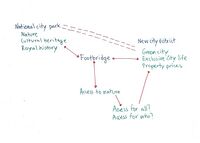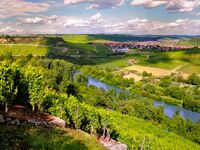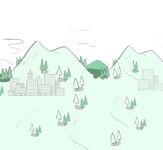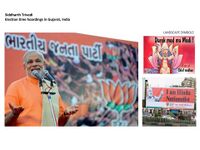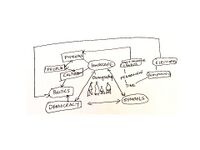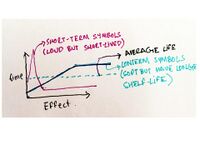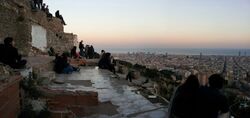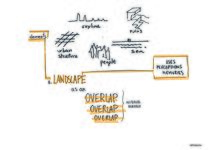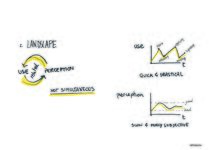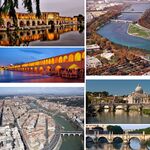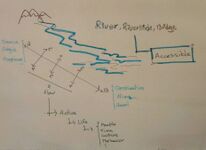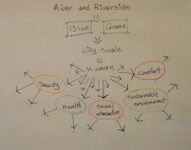LED Seminar 2016 - Landscape Symbols Reflection Group H: Difference between revisions
| (31 intermediate revisions by 6 users not shown) | |||
| Line 8: | Line 8: | ||
<gallery caption=" " widths="200px" heights="150px" perrow="3"> | <gallery caption=" " widths="200px" heights="150px" perrow="3"> | ||
Image:Landscape Symbols - Gliwice, Poland.jpg|slide 1 | Image:Landscape Symbols - Gliwice, Poland.jpg|slide 1 | ||
Image: | Image:Lion Draw.jpg|slide 2 | ||
Image: | Image:Bench Draw.jpg|slide 3 | ||
</gallery> | </gallery> | ||
| Line 32: | Line 32: | ||
<gallery caption=" " widths="200px" heights="150px" perrow="3"> | <gallery caption=" " widths="200px" heights="150px" perrow="3"> | ||
Image:Visual - Emil Buzzi.jpg|slide 1 | Image:Visual - Emil Buzzi.jpg|slide 1 | ||
Image: | Image:Visual10.jpg|slide 2 | ||
Image: | Image:IMG 3572.jpg|slide 3 | ||
</gallery> | </gallery> | ||
=== Reflections === | === Reflections === | ||
The footbridge, a very subtle feature between the new city scape and the National City Park, represents the very intimate connection between these two very different landscapes. When looking at the small bridge with this in mind, it looks more welcoming than ever. However, this footbridge is a very new part of the landscape. Before the new city district was built, an old footbridge some hundred meters along the stream was available, but this new footbridge is positioned so that the avenue ends in harmony with the bridge, thus making the National City Park much more integrated with the new city district. | |||
The meaning of this symbol, of the footbridge, is more complex than only its structure. In one way, it represents easy access to nature, cultural heritage and the royal history of the area. But with this, another question arises, access for whom? As the new city district is branded as a green city, the property prices suggest an exclusive city life where only certain parts of society are welcome. In this light, the access to nature looks more as a key feature of the greenness and exclusivity of the new city rather than an increase in the accessibility for all. | |||
== Landscape Symbol 3- Maliheh Shahghadami == | == Landscape Symbol 3- Cultural Landscape, Maliheh Shahghadami == | ||
=== Representations and analytical drawings === | === Representations and analytical drawings === | ||
''in addition to your initial visual please add two further analytical drawings of your symbol'' | ''in addition to your initial visual please add two further analytical drawings of your symbol'' | ||
<gallery caption=" " widths="250px" heights="150px" perrow="3"> | <gallery caption=" " widths="250px" heights="150px" perrow="3"> | ||
Image:Landscape | Image:Cultural Landscape.jpg|slide 1 | ||
Image: | Image:Landscape Symbol 2.jpg|slide 2 | ||
Image: | Image:Cultural LA.jpg|slide 3 | ||
</gallery> | </gallery> | ||
=== Reflections === | === Reflections === | ||
"Cultural Landscape: Landscapes as a cultural heritage and cultural wealth, represents the interaction of nature and human beings. This represents the evolution of human activity and settlement over decades and the evolution of the physical limitations or opportunities affected by natural environmental constraints as well as social, economic. | |||
* | Now a days, human being have more pressure on natural environments than before in terms of scale and effect in interrupting nature | ||
* | The clearest appearance of the degradation of the natural environment are: | ||
* | *Transportation which is the major contributor to pollution in today’s world, and a global environmental issues such as the greenhouse effect. Key impacts of transportation include frag-mentation of settlements and species and genetic populations, infraction of migration and traffic problems to wildlife. | ||
*Reduce of habitats and landscape. | |||
*Expansion of human activities into the natural environment, revealed by urbanization, recreation, industrialization, and agriculture, results in increasing uniformity in landscapes and consequential reduction, disappearance, fragmentation or isolation of habitats and landscapes. | |||
*Fauna and Flora species loss. | |||
As an evident the increasing exploitation of land for human use greatly reduces the area of each wildlife habitat as well as the total area surface in Europe. | |||
Outcomes are: | |||
*The abrupt nature of human interposition; Urbanization projects are planned and implemented on a much shorter time scale than natural processes; | |||
*Furthermore human intervention, such as the construction of buildings, and transportation results in the fragmentation of settlements | |||
*In big cases even the smallest, narrowest connections between habitats are broken off. Such isolation is catastrophic for life in the habitat segments." | |||
== Landscape Symbol 4- Nardena Modi, Siddharth Trivedi== | == Landscape Symbol 4- Nardena Modi, Siddharth Trivedi== | ||
| Line 67: | Line 71: | ||
''in addition to your initial visual please add two further analytical drawings of your symbol'' | ''in addition to your initial visual please add two further analytical drawings of your symbol'' | ||
<gallery caption=" " widths="250px" heights="150px" perrow="3"> | <gallery caption=" " widths="250px" heights="150px" perrow="3"> | ||
Image: | Image:Group h - siddharth trivedi.jpg|slide 1 | ||
Image: | Image:Group h - siddharth trivedi01.jpg|slide 2 | ||
Image: | Image:Group h - siddharth trivedi02.jpg|slide 3 | ||
</gallery> | </gallery> | ||
| Line 75: | Line 79: | ||
''Please write a 250 words text reflecting on the following questions, you can also take ideas from your group members into account'' | ''Please write a 250 words text reflecting on the following questions, you can also take ideas from your group members into account'' | ||
*How and why did the symbols you identify appear in your landscape? | *How and why did the symbols you identify appear in your landscape? | ||
Political hoardings are a very common sight during elections in India. Given the high uneducated and illeteracy rate of the country, lots of graphic-rich posters come up during the election times to entice voters for a particular party. So these particular posters came up during the 2013 general elections. | |||
*Did their meaning change along with socio-political, economic, environmental or cultural changes in your region, or country? | *Did their meaning change along with socio-political, economic, environmental or cultural changes in your region, or country? | ||
Given the short shelf life of my symbols (2-3 months)I wouldnt say that the 'meaning' or interpretation of these changed a lot during this time. But these symbol by itself was seen as a representative agent of change. Change that the people of India desperately wanted from the lies, deciet and corruption of the previous inefficient government. | |||
*What do these symbols mean to you today? Are they meaningful to more than just one cultural group? Are they shared across cultures? | *What do these symbols mean to you today? Are they meaningful to more than just one cultural group? Are they shared across cultures? | ||
Again, these symbols though were removed after the elections, they are embedded deep in the public physche. It was talk of every public event, domestic conversation, social media gossip and tea stall conversations. The impact of these posters (directly/indirrectly) was felt by everyone in the nation. Given the vast diversity of cultures, languages, religions, geopgraphies and politics India has, it seldon happens that an entire nation comes together for one event. This election was one such event. And the posters were symbolising agent for that. So yes, they were shared across the diversity of the cultural demographic. | |||
== Landscape Symbol 5-Turo Rovira Barcelona, Margherita Galante == | == Landscape Symbol 5-Turo Rovira Barcelona, Margherita Galante == | ||
| Line 86: | Line 91: | ||
<gallery caption=" " widths="250px" heights="150px" perrow="3"> | <gallery caption=" " widths="250px" heights="150px" perrow="3"> | ||
Image:Turó rovira bcn.jpg|slide 1 | Image:Turó rovira bcn.jpg|slide 1 | ||
Image: | Image:Galante_assigment02_picture02.jpg|slide 2 | ||
Image: | Image:Galante_assigment02_picture03.jpg|slide 3 | ||
</gallery> | </gallery> | ||
This picture is taken from a hight point of Barcelona, called Turò de La Rovira. It’s a place close to my actual residence where I used to go walking to take fresh air on the sunset and see the '''360º view of the city'''. From this picture, we can appreciate some of Barcelona skyline with different singular architectures, its orthogonal urban structure and the Mediterranean sea, but also house ruins, brick walls and people chilling out during the sunset. This lasts elements occupy more than a half of my picture because I think they are really important for understand the '''historical heritage''' and the contemporary perception of these landscape symbols. | |||
'' | |||
The hill was originally an Iberian settlement, then during the spanish civil war was an antiaircraft batter. Later on, it became the location for summerhouses and small houses with gardens connected to the stone extraction industry of the surroundings. Finally, in the post war, a strong immigration from south of Spain colonised the site with precarious houses until the moving of its inhabitant in proper social housing in the lasts years. Today the site is an open air historical museum. | |||
'' | At present, there is a '''strong conflict taking place between neighbourhood and massive tourism''' all around the city. Massive tourism had modified habits, economy and uses for local people. Five years ago nobody know this place and it was a peaceful landscape observatory on the city, suddenly a hight tourists presence arrive and change completely this atmosphere. It was a quick change and inhabitant still have to accept to share this heritage with tourists and tourist have to learn to travel respectfully with inhabitants. | ||
In conclusion, for me this picture represents not only an '''overlap of uses''', but even more a '''superposition of memories and perceptions of Turò de la Rovira landscapes in time'''. Also it helps me to make a reflection of the current unsustainable tourism model opted by the city. | |||
== Landscape Symbol 6-Rivers, Reihaneh Rafiemanzelat == | == Landscape Symbol 6-Rivers, Reihaneh Rafiemanzelat == | ||
| Line 105: | Line 109: | ||
<gallery caption=" " widths="250px" heights="150px" perrow="3"> | <gallery caption=" " widths="250px" heights="150px" perrow="3"> | ||
Image:Landscpape symbols.jpg|slide 1 | Image:Landscpape symbols.jpg|slide 1 | ||
Image: | Image:Photo 2016-04-19 22-22-19.jpg|slide 2 | ||
Image: | Image:Photo 2016-04-19 22-22-07.jpg|slide 3 | ||
</gallery> | </gallery> | ||
'' | Rivers are one of the '''natural''' symbols of landscape. they can be realized different in shape, deep, and characteristics in every parts of them. | ||
these photo are related to Isfahan my hometown and Rome the city that I live there now. River, its bridges and sidewalk became symbol of landscape for me as in my daily tripe I passed over them and every times of day it looks different and show me some thing new. | |||
river and its '''natural environment''' could be known as of '''Blue and Green infrastructure''' of landscape design. it will change by '''time''', '''culture''' and '''human behaviors'''. | |||
'''accessibility''' is the landscape symbol as well. rivers and the bridges on them which mostly shown by curve and straight line in graphical drawing, making '''access''' from one point to other point. | |||
river and its nature in the meaning could be different for people base on their realization of the environment, mods and culture. | |||
== Group reflection == | == Group reflection == | ||
Latest revision as of 16:22, 12 June 2016
Landscape Symbol 1- Gliwice Poland, Nicolas Reibel
Representations and analytical drawings
in addition to your initial visual please add two further analytical drawings of your symbol
Reflections
Please write a 250 words text reflecting on the following questions, you can also take ideas from your group members into account
- How and why did the symbols you identify appear in your landscape?
- Did their meaning change along with socio-political, economic, environmental or cultural changes in your region, or country?
- What do these symbols mean to you today? Are they meaningful to more than just one cultural group? Are they shared across cultures?
What is most important about this bench is the direction it faces. None of the benches in the city face the Kłodnica River, which bisects Gliwice. A major feature of the landscape, goes unnoticed on a daily basis. The bench stands as a symbol of “the gaze”, determining which landscapes have value. This highly polluted river is a point of shame for both the populace and the municipality. Neither group has addressed the issue, which lends to the bench's symbol of inaction.
The lion was brought to the city center, after initially being installed in front of the local steel mill. The mill has since shut down. The lion has a unique meaning to the populace, as they were displaced from their former home, Lviv Ukraine, and forced to reestablish themselves here in Gliwice, a former German city. Lviv is known as the city of the lion, and it's name relates to the Polish word for lion “lew.”
The merge symbol is taken from the on-ramp to the newly finished intercity highway (DTS) which links the major cities of the Silesian region. This new infrastructure ties the landscape, economies and communities together, merging the previously independent municipalities. These changes mirror another important merger, Poland's admission to the EU, which has greatly impacted the local economy. It even subsidized the DTS project.
This former factory is now a cultural space for music and exhibitions. These red brick structures litter the landscape, a majority abandoned, some appropriated for other means. They signify the former blue collar – industrial identity of the city. The red brick architecture in the city is often identified by the citizens as “German”, and emphasize that it originated from another culture. These buildings undoubtedly have another identity for the German tourists who visit the region in the summer.
Landscape Symbol 2- Stockholm, Emil Buzzi
Representations and analytical drawings
in addition to your initial visual please add two further analytical drawings of your symbol
Reflections
The footbridge, a very subtle feature between the new city scape and the National City Park, represents the very intimate connection between these two very different landscapes. When looking at the small bridge with this in mind, it looks more welcoming than ever. However, this footbridge is a very new part of the landscape. Before the new city district was built, an old footbridge some hundred meters along the stream was available, but this new footbridge is positioned so that the avenue ends in harmony with the bridge, thus making the National City Park much more integrated with the new city district.
The meaning of this symbol, of the footbridge, is more complex than only its structure. In one way, it represents easy access to nature, cultural heritage and the royal history of the area. But with this, another question arises, access for whom? As the new city district is branded as a green city, the property prices suggest an exclusive city life where only certain parts of society are welcome. In this light, the access to nature looks more as a key feature of the greenness and exclusivity of the new city rather than an increase in the accessibility for all.
Landscape Symbol 3- Cultural Landscape, Maliheh Shahghadami
Representations and analytical drawings
in addition to your initial visual please add two further analytical drawings of your symbol
Reflections
"Cultural Landscape: Landscapes as a cultural heritage and cultural wealth, represents the interaction of nature and human beings. This represents the evolution of human activity and settlement over decades and the evolution of the physical limitations or opportunities affected by natural environmental constraints as well as social, economic. Now a days, human being have more pressure on natural environments than before in terms of scale and effect in interrupting nature The clearest appearance of the degradation of the natural environment are:
- Transportation which is the major contributor to pollution in today’s world, and a global environmental issues such as the greenhouse effect. Key impacts of transportation include frag-mentation of settlements and species and genetic populations, infraction of migration and traffic problems to wildlife.
- Reduce of habitats and landscape.
- Expansion of human activities into the natural environment, revealed by urbanization, recreation, industrialization, and agriculture, results in increasing uniformity in landscapes and consequential reduction, disappearance, fragmentation or isolation of habitats and landscapes.
- Fauna and Flora species loss.
As an evident the increasing exploitation of land for human use greatly reduces the area of each wildlife habitat as well as the total area surface in Europe. Outcomes are:
- The abrupt nature of human interposition; Urbanization projects are planned and implemented on a much shorter time scale than natural processes;
- Furthermore human intervention, such as the construction of buildings, and transportation results in the fragmentation of settlements
- In big cases even the smallest, narrowest connections between habitats are broken off. Such isolation is catastrophic for life in the habitat segments."
Landscape Symbol 4- Nardena Modi, Siddharth Trivedi
Representations and analytical drawings
in addition to your initial visual please add two further analytical drawings of your symbol
Reflections
Please write a 250 words text reflecting on the following questions, you can also take ideas from your group members into account
- How and why did the symbols you identify appear in your landscape?
Political hoardings are a very common sight during elections in India. Given the high uneducated and illeteracy rate of the country, lots of graphic-rich posters come up during the election times to entice voters for a particular party. So these particular posters came up during the 2013 general elections.
- Did their meaning change along with socio-political, economic, environmental or cultural changes in your region, or country?
Given the short shelf life of my symbols (2-3 months)I wouldnt say that the 'meaning' or interpretation of these changed a lot during this time. But these symbol by itself was seen as a representative agent of change. Change that the people of India desperately wanted from the lies, deciet and corruption of the previous inefficient government.
- What do these symbols mean to you today? Are they meaningful to more than just one cultural group? Are they shared across cultures?
Again, these symbols though were removed after the elections, they are embedded deep in the public physche. It was talk of every public event, domestic conversation, social media gossip and tea stall conversations. The impact of these posters (directly/indirrectly) was felt by everyone in the nation. Given the vast diversity of cultures, languages, religions, geopgraphies and politics India has, it seldon happens that an entire nation comes together for one event. This election was one such event. And the posters were symbolising agent for that. So yes, they were shared across the diversity of the cultural demographic.
Landscape Symbol 5-Turo Rovira Barcelona, Margherita Galante
Representations and analytical drawings
in addition to your initial visual please add two further analytical drawings of your symbol
This picture is taken from a hight point of Barcelona, called Turò de La Rovira. It’s a place close to my actual residence where I used to go walking to take fresh air on the sunset and see the 360º view of the city. From this picture, we can appreciate some of Barcelona skyline with different singular architectures, its orthogonal urban structure and the Mediterranean sea, but also house ruins, brick walls and people chilling out during the sunset. This lasts elements occupy more than a half of my picture because I think they are really important for understand the historical heritage and the contemporary perception of these landscape symbols.
The hill was originally an Iberian settlement, then during the spanish civil war was an antiaircraft batter. Later on, it became the location for summerhouses and small houses with gardens connected to the stone extraction industry of the surroundings. Finally, in the post war, a strong immigration from south of Spain colonised the site with precarious houses until the moving of its inhabitant in proper social housing in the lasts years. Today the site is an open air historical museum.
At present, there is a strong conflict taking place between neighbourhood and massive tourism all around the city. Massive tourism had modified habits, economy and uses for local people. Five years ago nobody know this place and it was a peaceful landscape observatory on the city, suddenly a hight tourists presence arrive and change completely this atmosphere. It was a quick change and inhabitant still have to accept to share this heritage with tourists and tourist have to learn to travel respectfully with inhabitants.
In conclusion, for me this picture represents not only an overlap of uses, but even more a superposition of memories and perceptions of Turò de la Rovira landscapes in time. Also it helps me to make a reflection of the current unsustainable tourism model opted by the city.
Landscape Symbol 6-Rivers, Reihaneh Rafiemanzelat
Representations and analytical drawings
in addition to your initial visual please add two further analytical drawings of your symbol
Rivers are one of the natural symbols of landscape. they can be realized different in shape, deep, and characteristics in every parts of them.
these photo are related to Isfahan my hometown and Rome the city that I live there now. River, its bridges and sidewalk became symbol of landscape for me as in my daily tripe I passed over them and every times of day it looks different and show me some thing new.
river and its natural environment could be known as of Blue and Green infrastructure of landscape design. it will change by time, culture and human behaviors.
accessibility is the landscape symbol as well. rivers and the bridges on them which mostly shown by curve and straight line in graphical drawing, making access from one point to other point.
river and its nature in the meaning could be different for people base on their realization of the environment, mods and culture.
Group reflection
Please add a summary of your group reflection here
